All issues

Successor
Predecessor
Volume 20, Issue 5
Displaying 1-6 of 6 articles from this issue
- |<
- <
- 1
- >
- >|
-
[in Japanese]1971Volume 20Issue 5 Pages 207-212
Published: May 15, 1971
Released on J-STAGE: November 25, 2009
JOURNAL FREE ACCESSDownload PDF (1559K) -
Masamichi Kowaka, Hiroo Nagano1971Volume 20Issue 5 Pages 213-220
Published: May 15, 1971
Released on J-STAGE: November 25, 2009
JOURNAL FREE ACCESSThe corrosion of steels in flowing 3% NaCl solution was studied by means of a loop-test at velocities up to 2m/sec and at temperatures of 20, 35 and 55°C. The test period was 15 days. Some corrosion tests in tap water were also carried out for comparison. Corrosion rates and corrosion potentials were measured, and corrosion products were analysed in order to investigate the effects of alloying elements on the corrosion of steel in flowing sea water.
The results obtained are summarized as follows:
1) The fully annealed steels show comparatively higher corrosion rate than normalized steels in 3% NaCl solution. Al, Si, P, Cr and Mn followed by Mo and Cu are beneficial, while C is detrimental in the former steels, whereas Al, Cr and Cu followed by Mn and C are beneficial in the latter.
2) Al and Cr followed by Si are beneficial, but S and Cu are detrimental in tap water.
3) Some steels containing appropriate contents of Al, Si and P show good corrosion resistance both in laboratory and field tests.
4) The corrosion potentials of steels are constant at about -600mV (vs. SCE) in 3% NaCl solution, while they change in the noble direction continuously with time in tap water. It means that the oxide film formed on the surface gradually increases protected area in tap water.
5) The corrosion products produced in 3% NaCl solution were identified as α-FeOOH, β-FeOOH, γ-FeOOH and Fe3O4. The amount increases with increase in corrosion rate.View full abstractDownload PDF (933K) -
Koichiro Osozawa1971Volume 20Issue 5 Pages 221-226
Published: May 15, 1971
Released on J-STAGE: November 25, 2009
JOURNAL FREE ACCESSEffects of less than 0.2 percent copper alone and in combination with tin on the active corrosion behaviour of Fe-18 Cr-20 Ni-2 Mo in boiling five percent sulphuric acid were evaluated by measuring the weight loss at various potentials and at its rest potential.
The addition of 0.2 percent copper decreased the critical current density for passivation to about one half of that for the alloy without copper. Copper suppressed the metal dissolution at relatively noble potentials in the active state, increased the cathodic reaction rate, and shifted the corrosion potential in the noble direction.
The addition of copper in combination with tin was particularly beneficial to decreasing the corrosion rate in the above medium and in boiling 0.5 percent hydrochloric acid. The corrosion ratepotential curve in sulphuric acid showed that the corrosion rate of the copper-tin-containing alloy was lower than that of the alloy containing either copper or tin alone at relatively noble potentials in the active state (about-200- +50mV, Eh). Its corrosion rate was particularly low between -80 and -30mV. The corrosion potential of this system stays in this potential range. As to the corrosion rate at less noble potentials in the active state, the copper-tin-containing alloy ranks between the tin-containing alloy and the copper-containing alloy.
The relatively low corrosion rate of the commercially produced molybdenum-containing austenitic stainless steel in boiling five percent sulphuric acid, compared with that of the steel melted in the laboratory, was attributed to the presence of both copper and tin as residual elements in the former.View full abstractDownload PDF (798K) -
R. T. Foley, [in Japanese]1971Volume 20Issue 5 Pages 227-239
Published: May 15, 1971
Released on J-STAGE: November 25, 2009
JOURNAL FREE ACCESSDownload PDF (2228K) -
1971Volume 20Issue 5 Pages e1a
Published: 1971
Released on J-STAGE: November 25, 2009
JOURNAL FREE ACCESSDownload PDF (19K) -
1971Volume 20Issue 5 Pages e1b
Published: 1971
Released on J-STAGE: November 25, 2009
JOURNAL FREE ACCESSDownload PDF (19K)
- |<
- <
- 1
- >
- >|